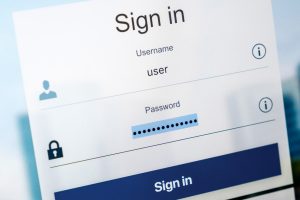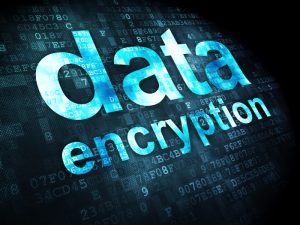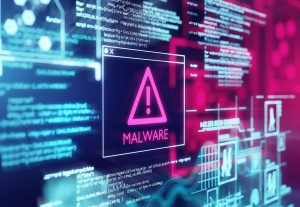Conducting a phishing test at your company can help identify the reactions of your employees to emails received from hackers. If executed correctly, it can also mean the difference between having a staff member who unconsciously activates malicious links and having one who takes the necessary steps to report them.
Phishing simulations have proved beneficial for many enterprises seeking to raise the cybersecurity awareness rates of employees, but transforming a staff member from being the weakest security link to an asset won’t occur overnight. IT professionals conducting cybersecurity training must have the patience to persevere and continue to teach, rather than simply reprimanding employees for errors. If you’re looking into how to run an effective phishing test at work, you have picked an ideal start to improving your company’s cybersecurity.
Anatomy of a phishing test
Phishing tests and simulations are designed for use by IT and security professionals, and they create mock-up versions of phishing sites and emails commonly sent to personnel by cyber-criminals. Hackers use bogus web pages and emails for a variety of criminal aims, including harvesting user credentials, infecting systems with malware, encrypting sensitive data and fooling employees into parting with company funds.
The false attacks delivered in a phishing test can identify employees’ knowledge gaps and can help them to identify and understand the various guises of a phishing attack. They can also train staff to avoid clicking on malicious links, downloading dangerous attachments and giving up sensitive data, such as passwords, by entering them into false forms.
Phishing tests can be a sandbox to test staff cybersecurity awareness safely. Taking place in a controlled environment, they can supply statistics revealing what percentage of an organisation is susceptible to attacks. With this biometric data, IT professionals can then work to improve employees’ reactions over time and chart any progress made.
Running an enterprise phishing test
An effective test should be planned out in a series, like a genuine phishing campaign, and should be delivered either every month or every quarter. Arranging your test over a longer period of time with regular intervals has multiple benefits. Firstly, you can gauge the improvement of employees in correctly reacting to phishing attacks, and secondly, you can stagger the tests with different difficulty levels, allowing staff to build their skills.
Utilising different forms of a phishing attack to target employees will not only ensure they remain vigilant, but will also prepare them for the multiple methods employed by cybercriminals. Initial emails sent in a test might use a basic form of phishing, while subsequent tests should employ more devious tactics. Spear phishing emails that employ Personally Identifiable Information (PII) of colleagues and clients, and those using public details to spoof well-known institutions and organisations, can provide serious challenges.
You should target employees and departments with emails that appear to be from sources they would normally receive mail from to make them believable. For example, you could send staff emails from Human Resources and ask them to divulge personal passwords for the payroll software.
It is crucial that all company employees are included in tests, particularly senior managers and department heads. Often possessing the highest level of access to confidential company data, upper management staff are frequently targeted by hackers seeking to infiltrate enterprises.
Action following a phishing test
After completing your first test, the true task really begins. The aim of phishing tests is to improve awareness of cybersecurity among employees, so record your data and study the results before acting next. High performers should be rewarded, while low performers will need to be educated.
Reporting is a vital step in the process to improve your employees’ awareness and reactions to phishing attacks. The key metrics that should be measured are link click rates, the number of staff members that leak confidential data and the number of staff members who successfully report phishing emails. You will know you are making progress if the first two categories are showing a decrease and the third is rising.
Personnel who perform well in phishing email tests should be encouraged to keep doing so. Let them know they are keeping their company safe and showcase their success to the rest of the company.
Those who fail to spot phishing tests, click on links and impart their private data will need further training. The most important function of any phishing test is to assist these low performers and improve their success rate.
Whether individuals requiring additional education are new staff members or the CEO, it is essential that you are never patronising or rude when discussing their poor performance, but instead work with them to enhance their detection abilities.
It is crucial that employees always feel comfortable discussing cybersecurity with IT professionals, so that they report potential phishing emails rather than ignore them or attempt to deal with them personally. For this reason, clear communication and an atmosphere of trust is essential.
While simply telling staff members they have failed a phishing test is suitable for those who don’t pass the first simulation, if repeated poor results continue, different action may be required. Create smaller groups of these individuals and give them more focused training before your next company-wide campaign takes place. Remember that everyone learns differently, so use as many different examples and methods as you can to explain how to spot phishing emails in your training.
Impress upon them the harmful consequences of a successful phishing email attack so they fully understand how important it is that they are able identify them. Giving staff a real-world context for what they are learning can sometimes help them to retain the information. Finally, make sure they clearly understand the protocols established at your company and the correct procedures to follow when reporting a potential phishing email.
At Galaxkey, we have developed a user-friendly, secure platform providing comprehensive protection for company emails. From powerful encryption to robust security features, including digital sign, you can ensure all company communications remain protected. Contact our professional team today for a free 14-day trial.



